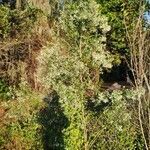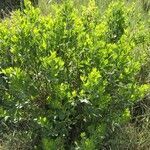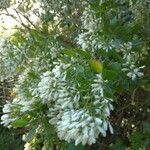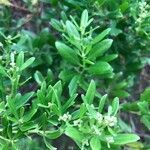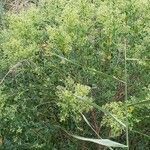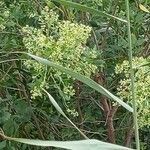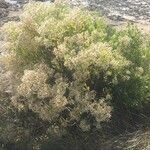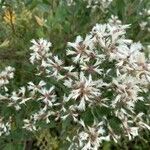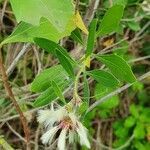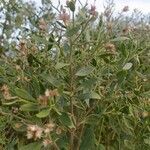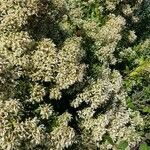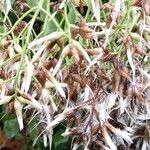Glabrous, much-branched shrub up to c. 4 m tall. Stems ribbed, mealy when young, becoming glabrous. Lvs obovate-oblong to oblong-elliptic, apetiolate and cuneate, obtuse to subacute, coriaceous, remotely serrate or crenate, mealy when young, becoming glabrous, puncticulate, (10)-15-30-(40) × (5)-7-10-(15) mm; lvs subtending glomerules smaller, often elliptic and entire. Capitula 3-5 mm diam. at anthesis, ± sessile in axillary and terminal glomerules of 2-20, fewer and sometimes solitary in ♀ plants. Inner involucral bracts elliptic-oblong, glabrous, green with pale membranous margin, glabrous, 3-4.5 mm long; outer bracts ± orbicular, mealy, c. 2 mm long. Corolla of ♂ florets cream, of ♀ florets inconspicuous and exceeded by pappus. Achenes obovoid, terete, 10-ribbed, glabrous; pappus minutely denticulate.
